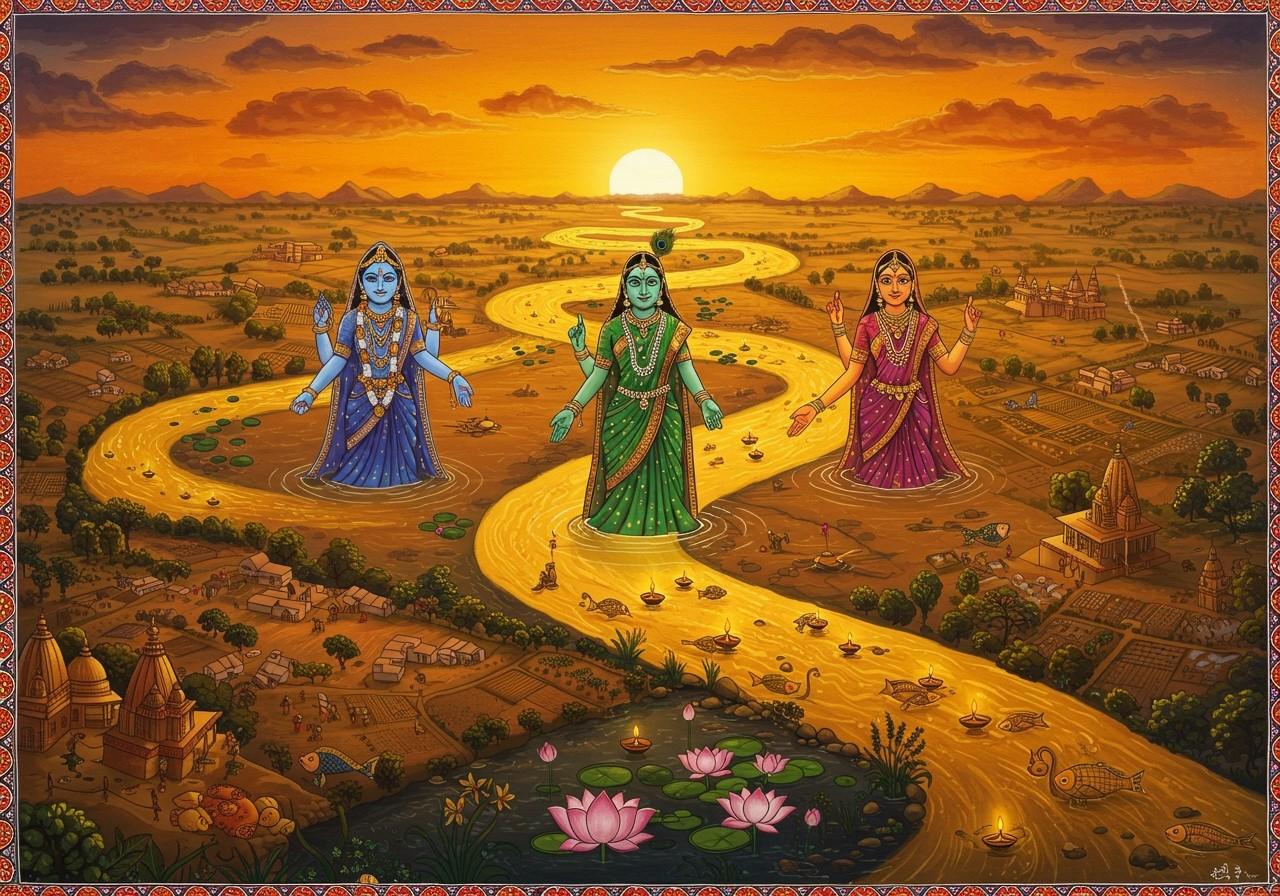
The Deccan Plateau, a vast plateau in South India, is a significant geographical feature that supports a rich tapestry of rivers. These rivers are the lifeline of the peninsula, sustaining millions of people and diverse ecosystems. Understanding the rivers’ origins, courses, and impacts is crucial for appreciating their role in the region’s culture and economy.
Overview of the Deccan Plateau
The Deccan Plateau covers parts of central and southern India. It is bounded by the Western Ghats, Eastern Ghats, and extends to the edges of the Satpura Range in the north. Known for its rich mineral resources and varied topography, it includes hills, valleys, and extensive river systems. The climate ranges from arid to semi-arid, with significant monsoon rains providing water to its rivers.
Major Rivers of the Deccan Plateau
The Deccan Plateau is home to several major rivers that play a crucial role in the lives of the people and the ecology of the region. These include:
- Godavari River: Often called ‘Dakshina Ganga,’ it is the second-longest river in India and flows eastward across the plateau into the Bay of Bengal. It is crucial for irrigation, drinking water supply, and industrial use. The Godavari is also revered as a sacred river, hosting numerous religious events.
- Krishna River: Originates near Mahabaleshwar in the Western Ghats and flows through Maharashtra, Karnataka, and Andhra Pradesh. The Krishna is a major source of irrigation water, supporting vast agricultural lands. It also plays a crucial role in hydroelectric power generation.
- Kaveri River: Known for its cultural significance, it originates in the Western Ghats and flows through Karnataka and Tamil Nadu before emptying into the Bay of Bengal. The Kaveri is essential for agriculture and is deeply intertwined with the cultural and religious practices of the region.
- Tungabhadra River: A tributary of the Krishna River with historical significance as it flows through the ancient city of Hampi. The Tungabhadra is known for its scenic beauty and the historical ruins along its banks, attracting tourists from around the world. It also contributes to the region’s irrigation and water supply.
- Mahanadi River: Originates in Chhattisgarh and flows through Odisha, providing significant irrigation and hydroelectric power. The Mahanadi supports a vast agricultural region and plays a vital role in the economy of Odisha. It is also home to diverse aquatic life.
Economic and Cultural Significance
The rivers of the Deccan Plateau are integral to the region’s economy and culture.
Agriculture
Rivers provide essential irrigation to vast agricultural lands, supporting crops such as rice, sugarcane, and cotton. They sustain millions of farmers who rely on these waters for their livelihoods.
Industry
Rivers host hydroelectric projects and industries relying on water for production processes. The Mahanadi River, for instance, is known for its extensive hydroelectric power projects that contribute significantly to energy supply.
Religious and Cultural Practices
Rivers like the Godavari and Kaveri hold immense religious significance. Many festivals and rituals are centered around these rivers, drawing devotees from far and wide. These rivers are deeply embedded in the spiritual and cultural fabric of the region.
Challenges and Conservation
These vital waterways face challenges like pollution and over-extraction. Conservation efforts, including sustainable water management and community engagement, are crucial for their protection.
Poojn.in Supports Your Spiritual Practices
Poojn.in offers a wide selection of puja items ideal for ceremonies related to the sacred rivers of the Deccan Plateau. Find pure copper kalash, brass aarti thalis, and more delivered to your doorstep. Visit www.poojn.in today.
For brass aarti thalis, visit: https://www.poojn.in/product/10737/brass-tir-kathi-16-inch-tir-kathi-trishul-kathi-16×4-total-64-inch.
For copper kalash, please check out this link: https://www.poojn.in/product/10736/brass-tir-kathi-18-inch-tir-kathi-trishul-kathi-18×4-total-72-inch.
Conclusion
The rivers of the Deccan Plateau are essential for South India’s prosperity and cultural heritage. By prioritizing their conservation, we ensure a sustainable future for both people and the environment.


